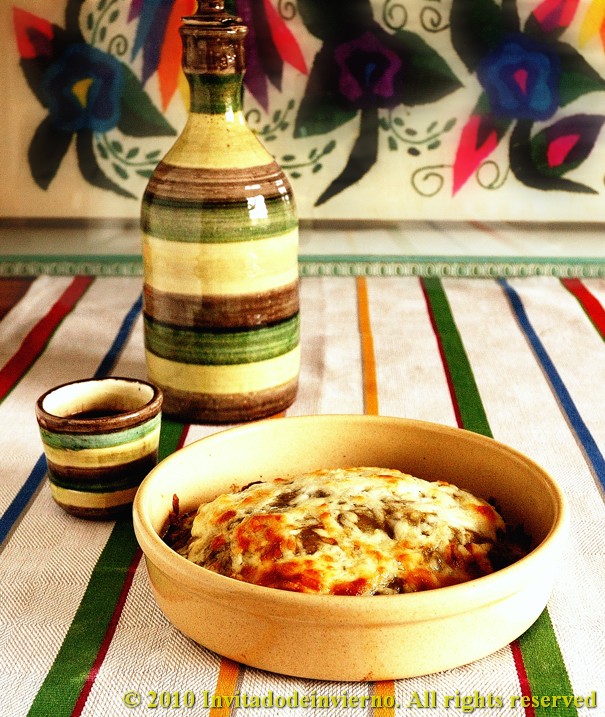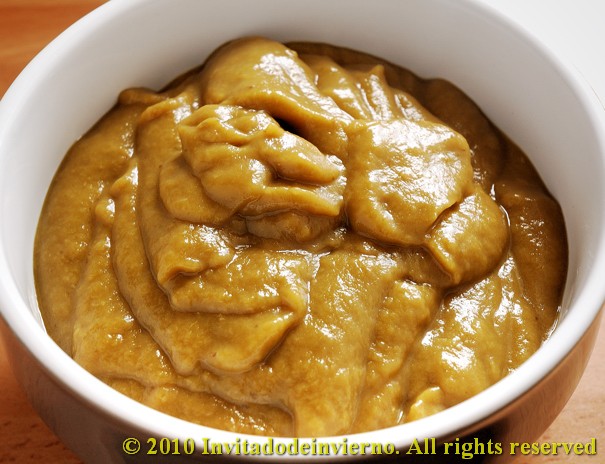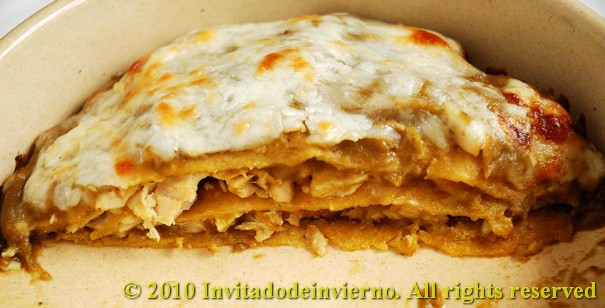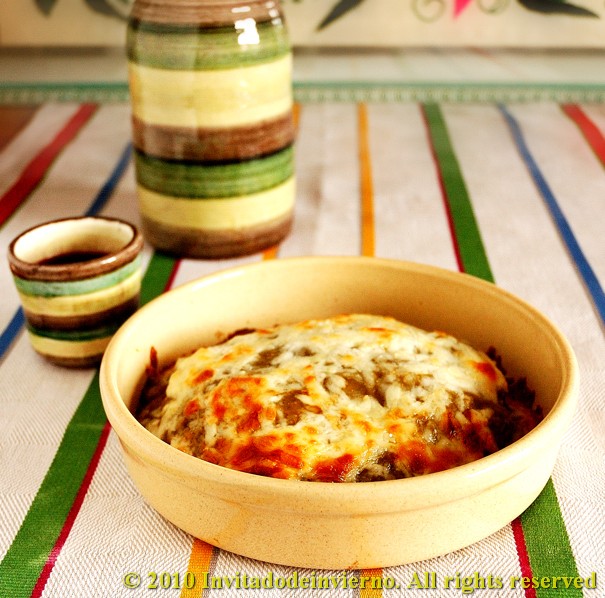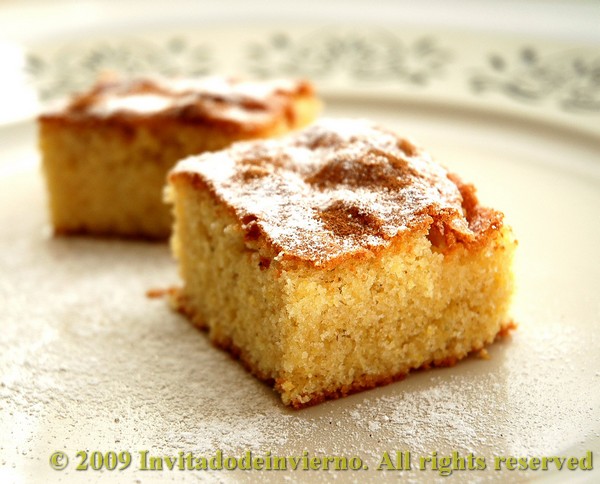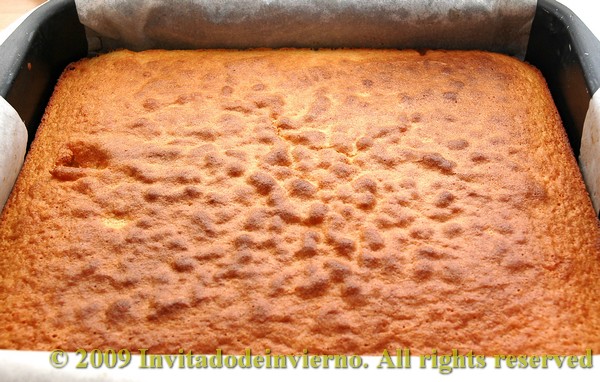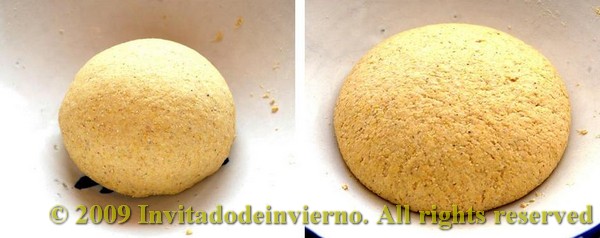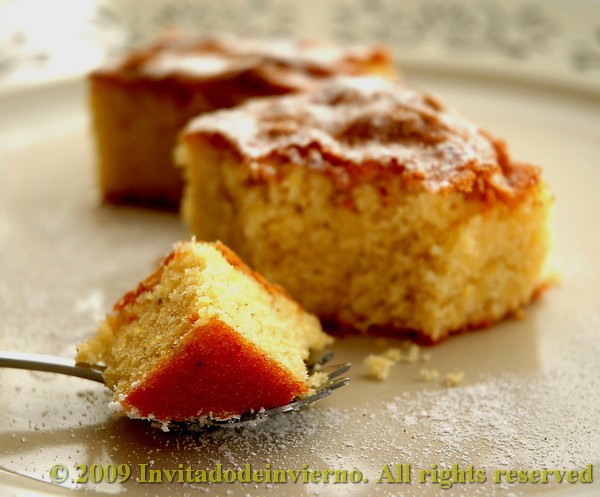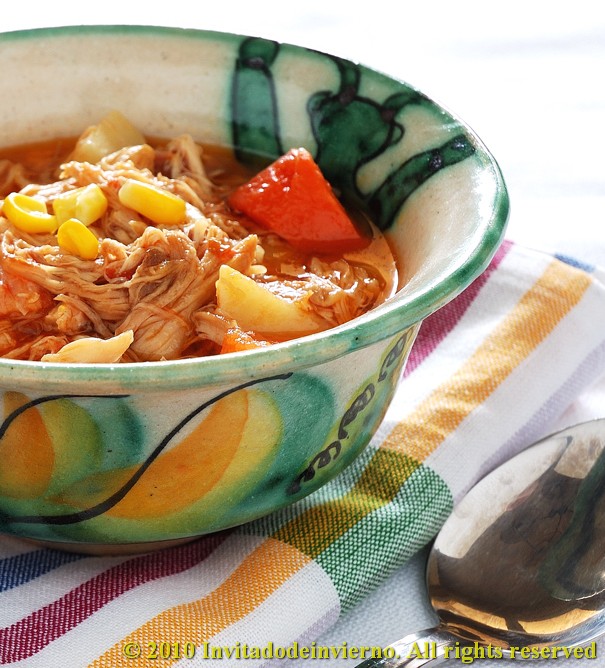
This month's challenge is a United States southeastern classic: Brunswick stew. I must admit I had never heard of it before. But that's not surprising, is it? Have you heard of the Spanish cocido? I thought so. This hearty stew is really not difficult to make... But the essential thing is that it should be so thick that a wooden spoon should be able to stand up in the middle. This recipe yields 12 servings, but somehow I was not aware of it and I didn't halve it... We better like it.
The 2010 April Daring Cooks challenge was hosted by Wolf of Wolf’s Den. She chose to challenge Daring Cooks to make Brunswick Stew. Wolf chose recipes for her challenge from The Lee Bros. Southern Cookbook by Matt Lee and Ted Lee, and from the Callaway, Virginia Ruritan Club.
Brunswick stew, slightly adapted
- 1/4 lb / 113.88 grams / 4 oz slab bacon, rough diced
- 2 Serrano, Thai or other dried red chiles, stems trimmed, sliced, seeded, flattened (I used 2 Spanish guindillas, medium hot)
- 1lb / 455.52 grams / 16oz rabbit, quartered, skinned
- 1 4-5lb / 1822.08- 2277.6 grams / 64-80oz chicken, quartered, skinned, and most of the fat removed (I used 1500 g only)
- 1 Tablespoon / 14.235 grams / ½ oz sea salt for seasoning, plus extra to taste
- 2-3 quarts / 8-12 cups / 64.607-96.9oz Sunday Chicken Broth (see below)
- 2 bay leaves
- 2 large celery stalks (I skipped them... sorry, I hate them)
- 2lbs / 911.04 grams / 32oz potatoes, or other waxy type potatoes, peeled, rough diced
- 1 ½ cups / 344.88 grams / 12.114oz carrots (about 5 small carrots), chopped (I used 2 large)
- 3 ½ / 804.72 grams / 28.266oz cups onion (about 4 medium onions) chopped (just used 2 onions)
- 2 cups / 459.84 grams / 16.152oz fresh corn kernels, cut from the cob (about 4 ears) ( I halved it...)
- 3 cups / 689.76 grams / 24.228oz butterbeans, preferably fresh (1 ¼ lbs) or defrosted frozen (I added slightly less here)
- 1 35oz can / 996.45 grams / 4 cups whole, peeled tomatoes, drained
- ¼ cup / 57.48 grams / 2.019 oz red wine vinegar (I used white vinegar, I find red vinegar too strong)
- Juice of 2 lemons (I didn't dare to add the lemon juice, I thought it would be too acidic for me)
- Tabasco sauce to taste (I didn't add any)
Chicken broth:
To make the chicken broth, I simply boiled 2 chicken carcasses along with a piece of hen, plus the carrots and the onions that the stew recipe calls for. Boil everything for 45 minutes, while skimming the foam. You'll get a beautiful fatty and yellow stock. It couldn't be easier.
- In the largest stockpot you have (I used my French Le Creuset oven), fry the bacon over medium-high heat until it just starts to crisp. Transfer to a large bowl, and set aside. Reserve most of the bacon fat in your pan, and with the pan on the burner, add in the chiles. Toast the chiles until they just start to smell good, or make your nose tingle, about a minute tops. Remove to bowl with the bacon.
- Season liberally both sides of the rabbit and chicken pieces with sea salt and pepper. Place the rabbit pieces in the pot and sear off all sides possible. You just want to brown them, not cook them completely. Remove to bowl with bacon and chiles, add more bacon fat if needed, or olive oil, or other oil of your choice, then add in chicken pieces, again, browning all sides nicely. Remember not to crowd your pieces, especially if you have a narrow bottomed pot. Put the chicken in the bowl with the bacon, chiles and rabbit. Set it aside.
- Add 2 cups of your chicken broth or stock, if you prefer, to the pan and basically deglaze the4 pan, making sure to get all the goodness cooked onto the bottom. The stock will become a nice rich dark color and start smelling good. Bring it up to a boil and let it boil away until reduced by at least half. Add your remaining stock, the bay leaves, celery, potatoes, chicken, rabbit, bacon, chiles and any liquid that may have gathered at the bottom of the bowl they were resting in. Bring the pot back up to a low boil/high simmer, over medium/high heat. Reduce heat to low and cover, remember to stir every 15 minutes, give or take, to thoroughly meld the flavors. Simmer, on low, for approximately 1 ½ hours. Supposedly, the stock may become a yellow tinge with pieces of chicken or rabbit floating up, the celery will be very limp, as will the chiles. Taste the stock, according to the recipe, it “should taste like the best chicken soup you’ve ever had”.
- With a pair of tongs, remove the chicken and rabbit pieces to a colander over the bowl you used earlier. Be careful, as by this time, the meats will be very tender and may start falling apart. Remove the bay leaf, celery, chiles, bacon and discard.
- After you’ve allowed the meat to cool enough to handle, carefully remove all the meat from the bones, shredding it as you go. Return the meat to the pot, throwing away the bones. Add in your carrots, and stir gently, allowing it to come back to a slow simmer. Simmer gently, uncovered, for at least 25 minutes, or until the carrots have started to soften (I skipped this stage, as I already had boiled my carrots).
- Add in your onion, butterbeans, corn and tomatoes (and my carrots). As you add the tomatoes, crush them up, be careful not to pull a me, and squirt juice straight up into the air, requiring cleaning of the entire stove. Simmer for another 30 minutes, stirring every so often until the stew has reduced slightly, and onions, corn and butterbeans are tender. Remove from heat and add in vinegar, lemon juice, stir to blend in well. Season to taste with sea salt, pepper, and Tabasco sauce if desired (I thought it didn't need it).
- You can either serve immediately or refrigerate for 24 hours, which makes the flavors meld more and makes the overall stew even better. Serve hot, either on its own, or with a side of corn bread, over steamed white rice, with any braised greens as a side.

My potatos were not starchy enough, so the broth wasn't really thick. In fact you can see the potato dice have kept their shape pretty well through almost 2 hours of boiling. Indeed the whole thing should have been a bit more "amalgamated", but still it was truly stomach-warming.
Eager to know more?
